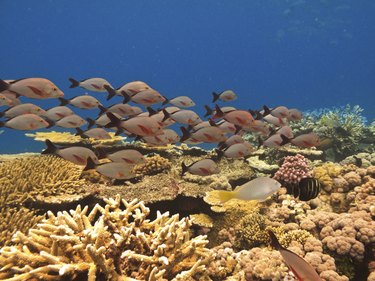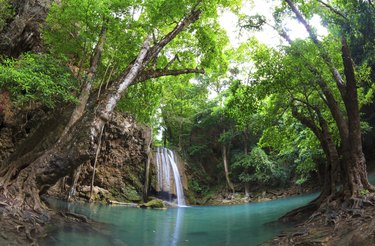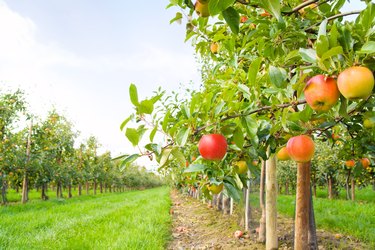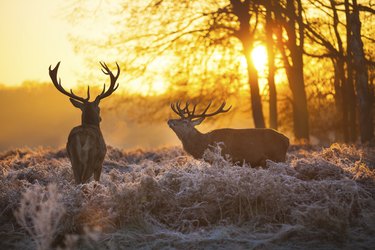
An ecosystem is a term first used by a Tansley, an ecologist from Britain, to mean all of the organisms in a particular environment and how they interact. Examples of ecosystems are forests, lakes, or deserts. But an ecosystem is not truly complete without considering the non-biological, or abiotic, components as well. The structure and function of an ecosystem depends on all of these factors incorporated together.
Structure-Natural ecosystems
Video of the Day

The natural characteristics of ecosystems include the natural ecosystem. This is an ecosystem that is found in nature, where there is no interaction with humans. It is a system where everything is in balance and if one component is removed, the system will fall apart. Natural ecosystems are defined by their habitat. The two major categories are terrestrial and aquatic. Deserts, forests, meadows, prairies and jungles are terrestrial ecosystems, while aquatic ecosystems include all marine and freshwater systems.
Video of the Day
Structure-Artificial ecosystems

Another structural type of ecosystem is an artificial system. These ecosystems are constructed in some fashion by humans. For example, a constructed wetland is where the ponds are built, wetland and land plants are physically placed and fish are released into the ponds. To keep the constructed wetland in balance, human intervention is needed to maintain the ecosystem. Ponds must be kept filled so plants and fish will thrive, invading weeds must be controlled and predators need to be controlled. Left to its own devices, a constructed wetland would eventually revert to a wild state, since it was not a natural ecosystem. Other artificial ecosystems are orchards, large or small gardens and farms.
Function

The functional characteristics of an ecosystem are dependent on how all of the organisms interact and influence one another, how the energy of the ecosystem operates. The energy is simply the way the predator-prey relationship and the plants transfer energy; calories are burned consuming prey, thereby transferring the energy of the prey to the predator and as plants die and decompose, their energy is transferred to the soil where it is taken up again by other plants. The function of an ecosystem can only be considered as a whole, not piecemeal, as every part of the ecosystem has a functional effect on another.